What are the Different Kinds of Roof Vents?
Observing your roof's vents may not be the first thing on your mind when you step outside or venture into your attic. You might wonder what these...
3 min read
 Christian Avy
Nov 23, 2022
Christian Avy
Nov 23, 2022
Attic ventilation is one of the most important things to get right in order to make sure your roof lives out its full lifespan.
If you aren’t sure what kind of attic ventilation system you have, you may not have a good idea about if your ventilation is properly tuned, and moving the right amount of air in and out of your attic.
When all of that is out of whack, it can make your attic to get hotter than normal. That heats up other parts of your home, and causes your air conditioning system to work much harder than it needs to.
To help you learn some more about what might be going on in your own attic, we wrote this blog!
Today, we’ll be talking about:
Let’s get started!
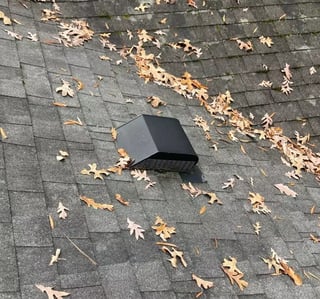
Attics are ventilated by allowing for warm, older air to exit the roof, and letting colder, fresh air come into the attic. This is very often done by placing intake vents near the bottom of the roof, and exhaust vents near or at the top of the roof. As cold air comes in through the intake, the warm air will exit, and establish the airflow needed to keep your attic properly ventilated.
There are two main types of ways to ventilate your attic, each method with different types of attic vents associated with them. Those types are active attic vents, and passive attic vents.
Active attic ventilation systems use some kind of mechanism, whether it be electricity, or airflow, to actively pull stale air out of your roof.
The fresh air is brought in at the bottom of the attic, usually though a passive vent, and then pulled out by the active vent sitting at the top of the roof.
The most common kinds of active exhaust vents are either turbine vents or powered vents.
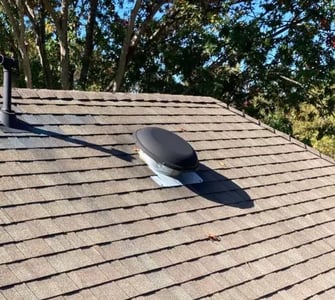
Turbine vents use the power of the wind, or rising heat to suck the air out of the space below it. If breeze is blowing of at least a few miles an hour, it can spin pretty quickly, and move out a lot of air. The vent can still move without wind however, as the rising hot air will also cause it to slowly spin, forcing out more air.
Powered vents are usually operated by wiring into your home’s electricity, or through an attached solar panel. Either way, they use that energy to run a fan located at the top of the attic, pulling air through the roof.
Powered Roof Vent
Passive attic ventilation systems are pretty much the exact opposite of the more active sorts. They allow air to enter exit your roof by just existing and letting the warmer air rise through the top of your roof, to be replaced by cooler air.
Soffit vents are the most common type of passive intake vent. They let air in through the underside of your roof’s soffit, which hangs over the edge of the home.
Drip edge vents function similarly to soffit vents, except by creating a lip under the drip edge. They aren’t quite as efficient as soffit vents, so they’re only usually recommended for use on roofs without enough space for a vent under the soffit.
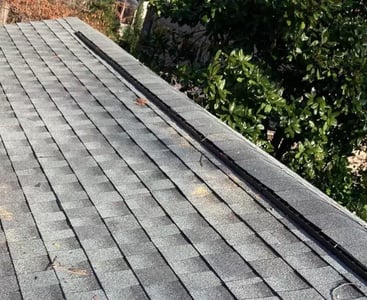
There are also two major types of passive exhaust vents. These days, ridge vents are becoming more and more popular, as they are a very low-profile way to let air out of the roof. They also do a great job as they let air directly out of the ridge of the roof, which is the highest point where the warmest air will collect.
For homes that don’t have a long enough ridgeline to get the whole job done, a box vent, also known as a roof louver, might be a good option. They still attract much less attention than either of the active vents, and can be placed in areas of your roof that won’t affect the look of your home. Ridge Vent
If your attic isn’t ventilated enough, or isn’t ventilated in the right places, the sun beating down on your roof will produce a lot of heat. That will cause the air to become stale and warm, heating up roof more than it should be, and wearing out your roof’s shingles.
In the winter, without ventilation, the warm air from your home will rise and get trapped towards the top of your roof. That air will start to condense against the cold roof like it does on a cool glass of water. Having that condensation will create some serious water damage to the roof decking, and your roof’s wooden frame. If you don’t get something like that taken care of immediately, it can really mess up the structure of your roof, and be a massive problem to repair.
On top of all that, having your attic properly ventilated can help your home’s energy efficiency, as it won’t be heating up the space below it, and your air conditioning won’t have to work quite as hard.
If you want to learn some more about the different kinds of roof vents, check out the blog we wrong on that topic!
On Tops Roofing has been providing attic vent repair and replacement services to the Triangle area of North Carolina for over 30 years. Whatever your roofing project requires, we've got the experience to handle it!
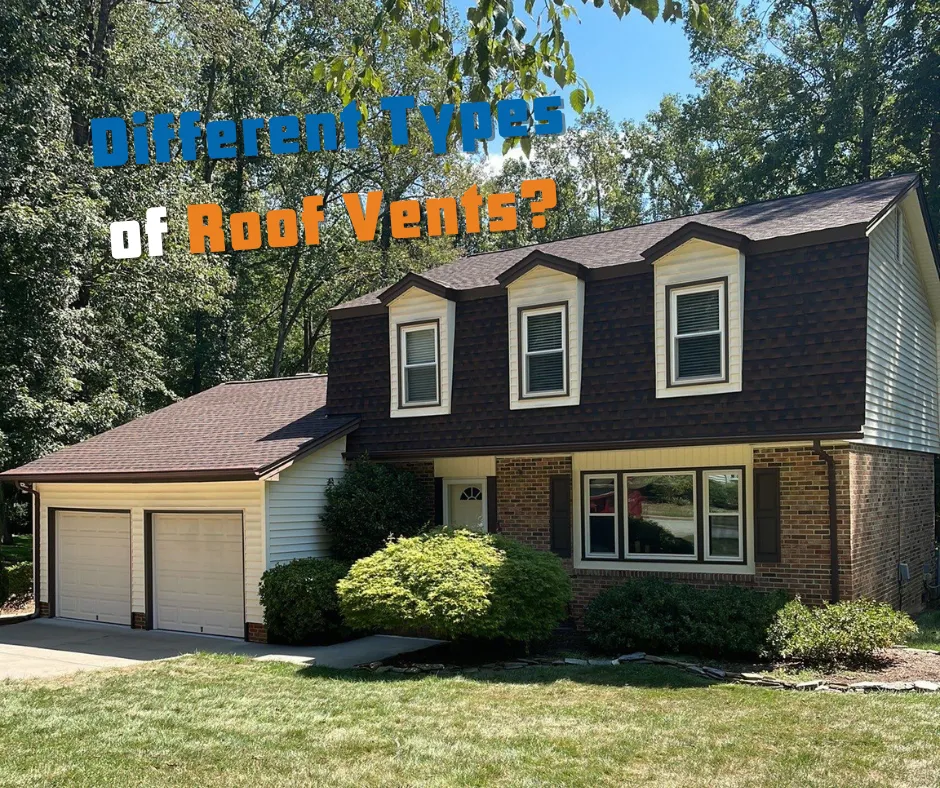
Observing your roof's vents may not be the first thing on your mind when you step outside or venture into your attic. You might wonder what these...
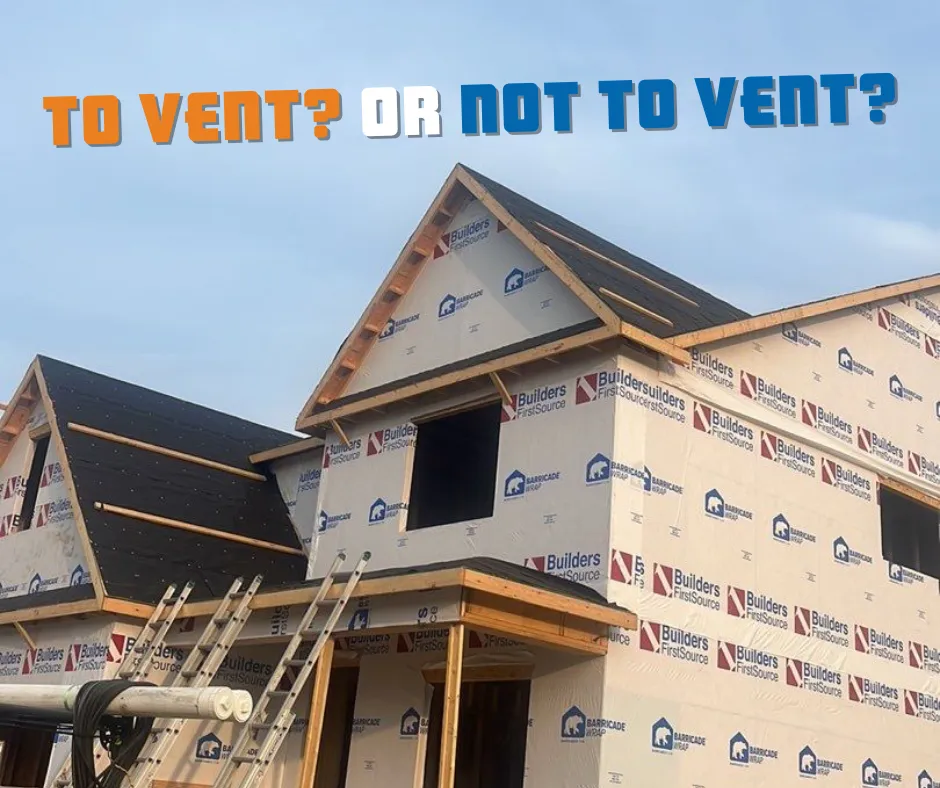
When it comes to taking care of your home, understanding the various components that contribute to its health and longevity is crucial. One of the...
.png)
When winter comes, it often brings with it some beautiful scenes. Trees become bare, creeks freeze over, and snow blankets the neighborhood.